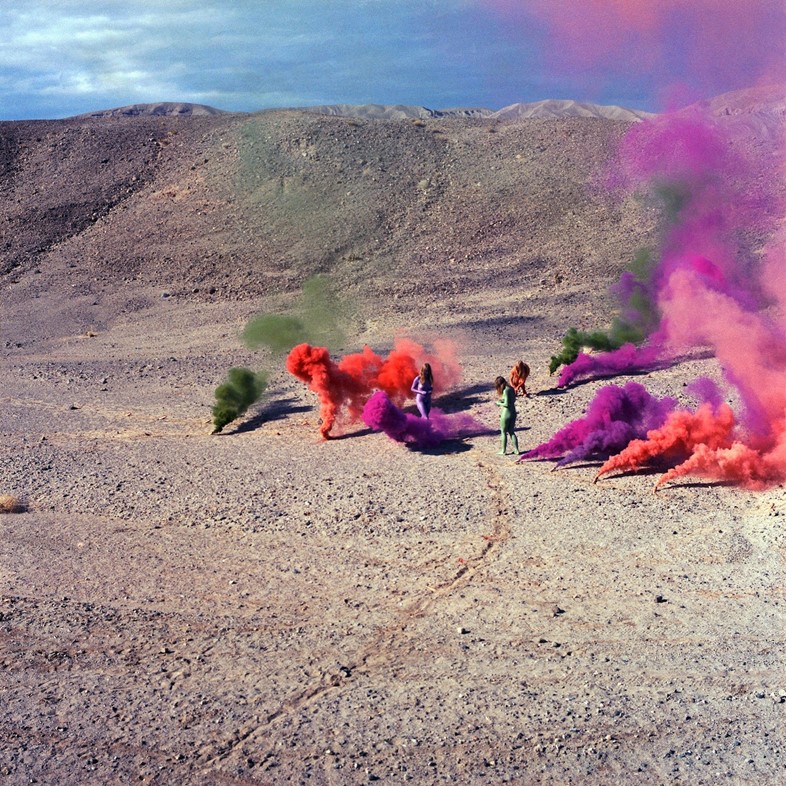The legendary feminist artist speaks to AnOther ahead of a new show opening at ICA Miami
Artist, author and educator Judy Chicago is best known for two things. First – founding the first ever feminist art programme at California State University in the early 1970s. The second, which followed soon after, was the creation of the groundbreaking installation The Dinner Party (1974–9), a diamond-shaped table constructed from white tiles, holding ceramic place settings inscribed with names of historical women from Eleanor of Aquitaine to Virginia Woolf. The latter is widely regarded as one of the first internationally recognised pieces of feminist work and is now permanently housed at The Brooklyn Museum. But, as Chicago candidly tells me, she lives in its shadow. “I often say it’s my hope that before I die, the rest of my body of work will emerge from The Dinner Party, and it will be recognised as only one work, in a huge body of work.”
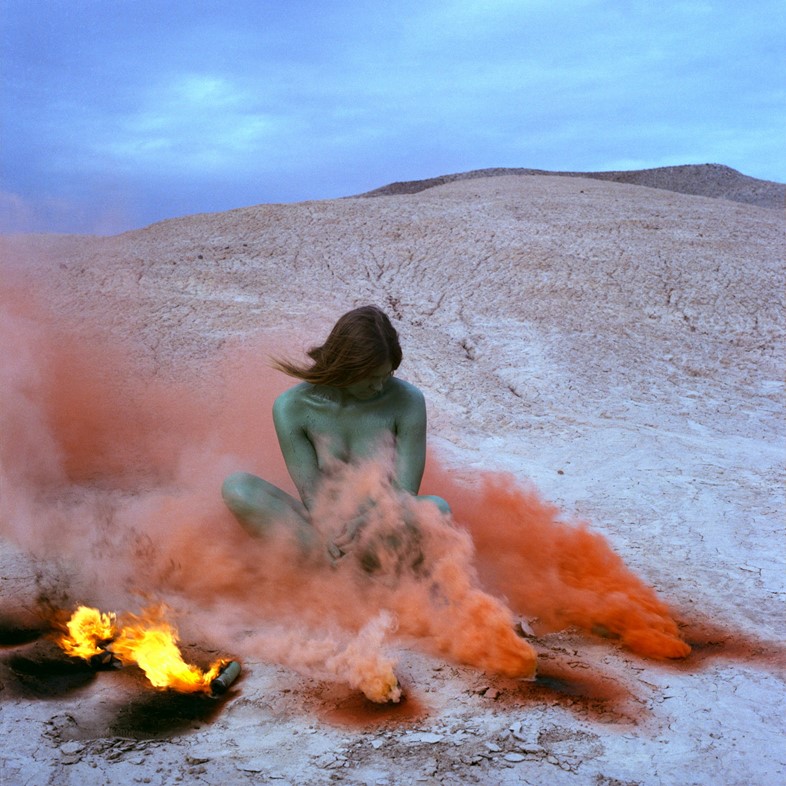
Indeed, the breadth of Chicago’s practice extends far beyond The Dinner Party, including the likes of The Birth Project (a collaborative textile piece executed by 150 skilled needleworkers in the 1980s), PowerPlay: A Prediction, a series examining the construct of masculinity, and The Holocaust Project, which took eight years to complete and premiered in 1993. In addition, Chicago has created countless sculptures and prints, paintings and wall hangings, some of which are due to go on display in a new exhibition at ICA Miami next week. The show, titled Judy Chicago: A Reckoning, will celebrate three decades of her career, culminating in a new iteration of her Atmospheres series, several live performances staged between the 1960s and 1970s incorporating fireworks, coloured smoke and dry ice. Here, she discusses overcoming critique, how Atmospheres is piquing the interest of many in 2018, and why toxic masculinity is more prevalent than ever before.
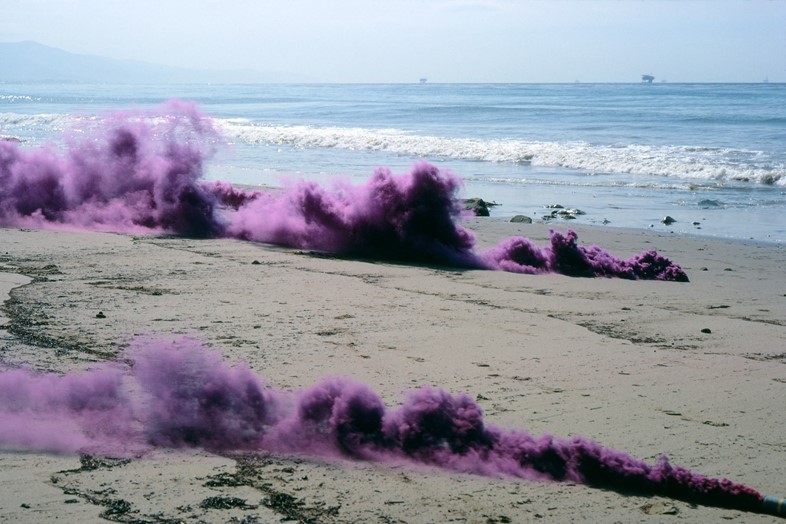
On staging A Reckoning at ICA Miami...
“The show at ICA covers three decades of my work. It isn’t a retrospective, but selections from over that period of time. The first section contains my earliest works and then it moves into the pieces I made in the 1970s and 1980s. They have done a fantastic exhibition catalogue including a brilliant essay by Johanna Fateman. I mean the whole catalogue is great, but her writing is particularly startling. The title of the essay is Cunt. Alex Gartenfeld, who curated the show, bless his heart... He asked me actually what I thought of that title. I knew what he was doing in asking me. He was hoping I would say, ‘Oh well that’s too much’ so that he could go to Johanna and say ‘Judy doesn’t like the title!’ I don’t think he wanted to admit that it made him uncomfortable. What Johanna does in the essay is to sketch the social, political and cultural context in which I emerged as an artist, in the early 1960s. She talks about sexual attitudes of the day, cultural attitudes of the day, attitudes towards women... It’s not often that I read a critic’s writing and learn something, but what I learned from her essay, she actually made it clear to me, was why my work was so often met with such shock.”
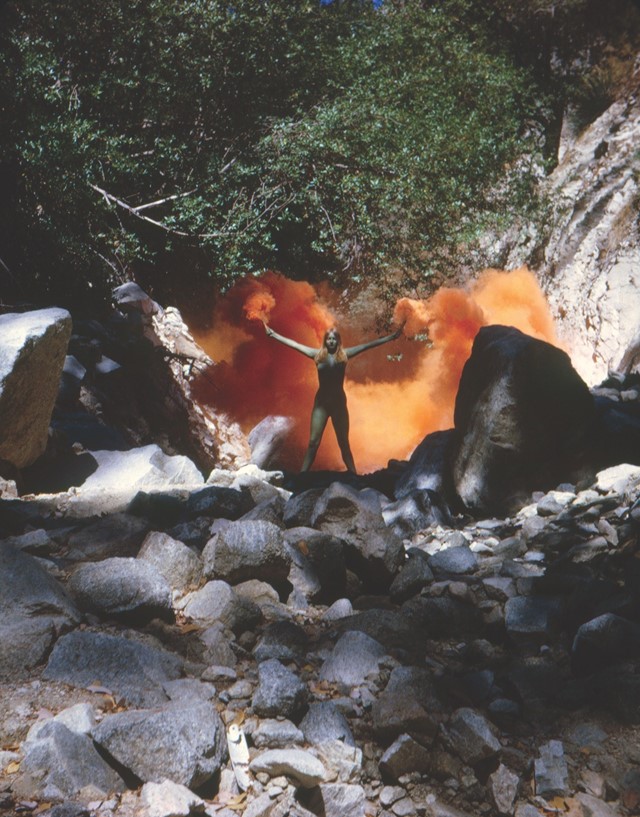
On responding to criticism...
“In the 1960s when I was living and working in LA and in Pasadena, I was making large-scale, sculptural work. It was during this time that I made a piece called Rainbow Pickett, which has become kind of iconic because it went into the first minimalist show at the Jewish Museum in 1966, called Primary Structures. I was only one of three women in that show. The most powerful curator on the west coast at that time was a man named Walter Hopps and he worked at the Pasadena Art Museum, which was a small museum back then. Walter used to go to all the artist’s studios in Pasadena, on a kind of monthly basis, and I was basically the only woman artist working there and he refused to look at Rainbow Pickett. I mean he wouldn’t even look at it! It broke my heart. Later, I did a lecture at the Jewish Museum in relation to an anniversary exhibition they did for the minimalist show, and the name of it was Rainbow Pickett Broke My Heart.
“Years later I ran into him in Washington. We had breakfast, and he said to me ‘I know you hate me’, which I think he figured out from my first book Through the Flower: My Struggle as a Woman Artist when I described this incident without naming him. And he said ‘you have to understand in the 1960s in LA, women were either artist’s wives or groupies. So what was I to make of the fact that you were making work that was stronger than the men’s? I had to avert my eyes.’ It was that my gender so interfered with culture’s ability to see my work, that it was met with such resistance and shock. Also, I was unabashedly myself. I was not the good girl you were supposed to be in the 1950s and 1960s. I had all these ambitions, and then of course when I made the radical change in my work and set out to create a female-centred, feminist art practice, that’s when there was a real collision.”
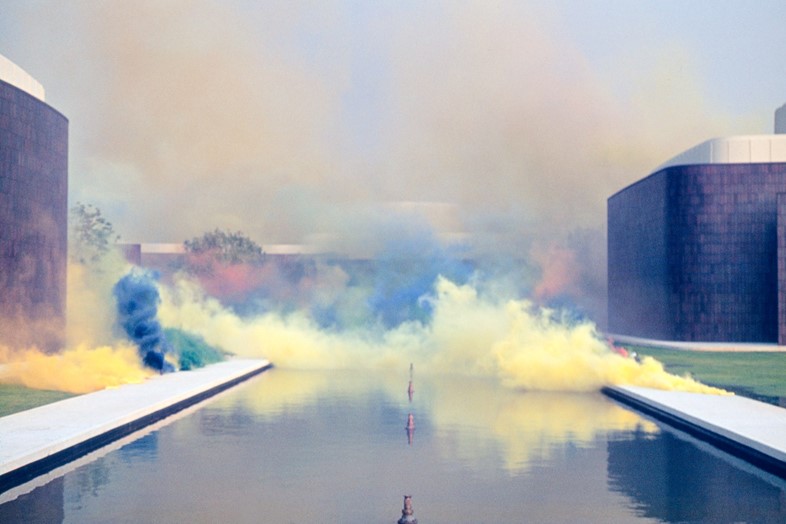
On creating Atmospheres...
“I started making them at the end of the 1960s, at a time when health and safety was lax. I could just go and buy fireworks and coloured smoke and go out with my friends to the beach or to the forest. I mean today I can’t believe that I staged Atmospheres in a national forest. I was studying to be a pyrotechnician at a time when there were no female pyrotechnicians in southern California. It’s the only time in my life that I was prevented from realising my goals, because I was sexually harassed by the guy that was in charge of my apprenticeship – which is how you got to be a licensed pyrotechnician, you have to go through an apprenticeship. So in 1974, I stopped making these works, because I couldn’t get the level of support I needed to be able to get better at it.
“I picked it back up later in life and have been making them again since 2012. I started making these pieces in the first place because I was very interested in disappearing the masculine environment; obscuring it and softening it. For A Purple Poem for Miami, a new Atmospheres piece which will take place in February next year as part of the show at ICA, we’re actually purpose building a minimalist structure. So it’s an even more obvious symbol of masculinity. I’ve been working really hard on it, we’ve done a number of casts, and yesterday we had an hour-long conversation with my pyrotechnician guy in LA. There’s a lot of planning involved in them now, although when I started them, they were much more spontaneous.”
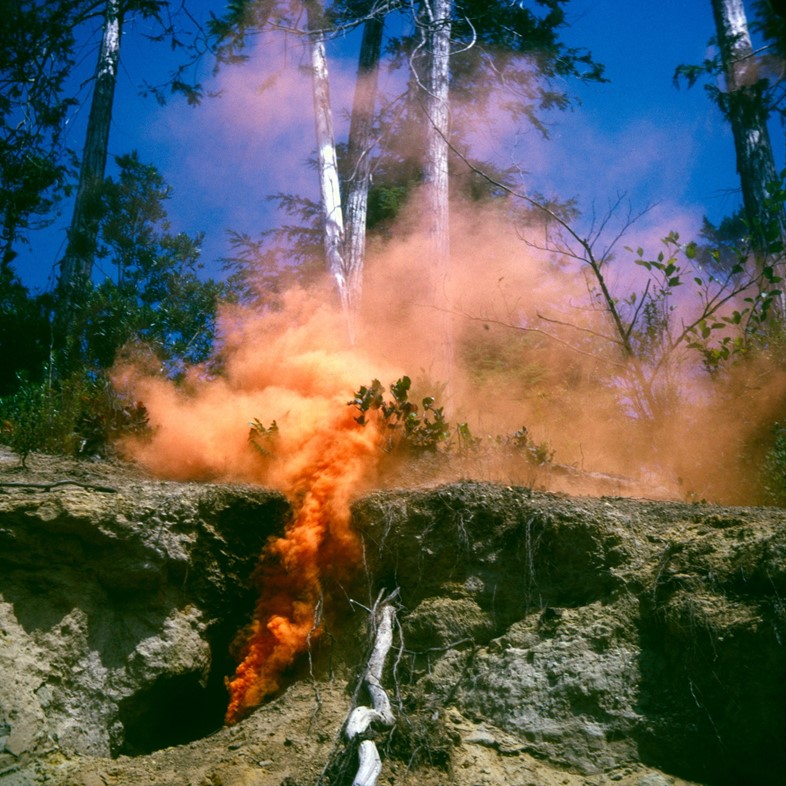
On the context of Atmospheres today...
“The writer Philipp Kaiser was recently working on an essay about my fireworks. He called me up and he said ‘Judy! I can’t find any writing on it!’ And I said, ‘well Philipp, that’s because there hasn’t been any writing on it!’ He just couldn’t believe it. But suddenly, it seems, people have become really interested in it. I can’t even tell you how many places around the world have been requesting showing a video clip, or showing the whole women and smoke video, or showing or buying the prints of my fireworks pieces.
“In the early 1970s I did three pieces in conjunction with a big show I did in Orange County. I set off fireworks on a ridge right overlooking the freeway. Now, I could never do it. It looks like a terrorist attack, or the terrible fires, which have been raging around the world because of the lack of environmental controls, and our going backwards in terms of recognising and dealing with climate change. I think it has taken people a really long time for people to see this in my work. I mean, look how long it took with The Dinner Party. I showed PowerPlay again at the beginning of this year, too, and suddenly everybody saw what I was talking about then, which was toxic masculinity. But nobody seemed to be able to see, what I could see at the time. Toxic masculinity is now a global phenomenon. It’s a function of patriarchal control, and it’s a way – you can call it mass terrorism – of keeping women in line.”
Judy Chicago: A Reckoning opens at The Institute of Contemporary Art, Miami on December 4, 2018; A Purple Poem for Miami will be staged on February 23, 2019.
